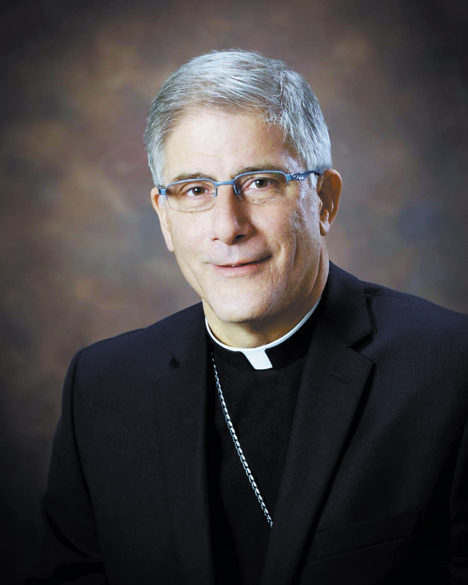By Bishop Joseph R. Kopacz, D.D.
The Octave of Easter, the celebration of the Lord’s resurrection from the dead extends for eight days reaching its crescendo on the second Sunday, pastorally and prayerfully cherished as Divine Mercy Sunday.
The Gospel each year for this Sunday is John 21:19-31 when the risen Lord appeared twice to his apostles huddled in fear to bless them with peace, to bestow the Holy Spirit upon them, to restore their lives and to send them on mission. The second appearance in this setting was necessary because Thomas went missing for the first encounter and was still steeped in his shame, doubt, fear, and hopelessness. The resurrection narratives are written down and proclaimed in the words of the evangelist “that you may believe that Jesus is the Christ, the Son of God, and that believing you may have life in his name.” (John 20:31)

Each year, the Divine Mercy of the crucified and risen Lord is invoked for the “whole world” and many worthy causes, and this year at the Cathedral we raised up in prayer the victims of sexual abuse in our church.
During the Synod process many in our diocese expressed a yearning for unity that acknowledges the necessity for healing on many fronts. Like the apostles, and especially St. Thomas, many in our church and society are hurting for numerous reasons. One grave reason that ensnares far too many is the crime of sexual abuse that continues to afflict victims and loved ones. Some at our parish and diocesan sessions brought to the fore the commitment of church leadership nearly twenty years ago to never lose sight of “The Promise to Protect and the Pledge to Heal.”
Over these past twenty years much has been accomplished through the development and strengthening of safe environments to fulfill the promise to protect our children and young people in church programs. Countless thousands have been educated to be vigilant not only in church settings, but also in their daily lives concerning the behaviors and circumstances that could be problematic for vulnerable children and youth. Never again can we be complacent because predators in all walks of life are always alert for the environmental soft spots that grant access to children.
Just as critical in the fulfillment of the church’s commitment is “The Pledge to Heal,” lest we forget those who are suffering the unspeakable assaults of sexual abuse against their human dignity. Divine Mercy Sunday resonates with the grace of forgiveness, peace, reconciliation, hope and life. It’s twofold. The apostles, the first church leaders, had abandoned and denied their Lord, and they needed the grace of mercy and a new beginning. “For the sake of his sorrowful passion, have mercy on us and on the whole world,” is a plea for God’s mercy upon church leadership who were perpetrators, or who allowed the abuse to continue.
The more heartfelt prayer is for the mercy of God to bathe those who have been harmed with healing and hope, peace and new life. When we hear Jesus’ invitation to Thomas to place his finger in the nail marks and his hand into the pierced side, we know that God desires healing for all who are broken and beaten down from sexual abuse and who yearn for new life to touch the healing power of God’s mercy in Jesus Christ. This resurrection moment was announced by the Lord Jesus at the outset of his public ministry in St. Luke’s Gospel. “The Spirit of the Lord is upon me because he has anointed me to bring good news to the poor, to heal the brokenhearted, to bring release to captives, recovery of sight to the blind, and set the oppressed go free.” (Luke 4:18) These words of the Lord are the fundamental work of the church, and the heart of the “pledge to heal.”
There are many paths to new life in the Body of Christ and our prayer on Divine Mercy Sunday was that we never tire of praying for and accompanying our grievously harmed brothers and sisters on the path of life to him who is the Way, the Truth and the Life.
